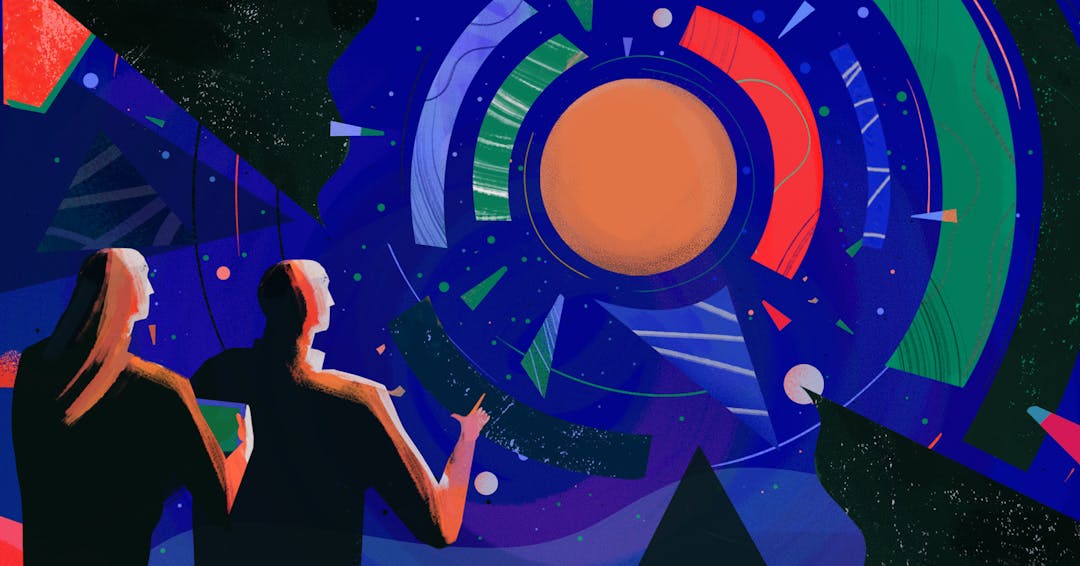Perpetual software licensing is coming to an end. SaaS is the future. Transition, and manage the transition appropriately, for continued growth.
Many companies are now switching from a perpetual licensing model to subscription-based licensing. This pricing model can be a win-win for both the consumer and the business. It allows the consumer access to the software they previously could not afford and allows the business to focus on more efficient incremental development and potentially get more money over a longer period of time. In this post, we'll compare the perpetual licensing model with subscription licensing so you can choose the right one for your product.
So we are on the same page, let's define what we mean by perpetual licensing and subscription licensing. Then we can get into more detail about why the subscription model is gaining in popularity.
SaaS subscription vs. perpetual license: what's the difference?
The main difference between a subscription license and a perpetual license for SaaS businesses is the relationship between the fee that customers pay to software companies and the access they gain to the product.
With a SaaS subscription, customers pay a recurring subscription fee in order to access the product based on their subscription term. Customers lose access to the product if they stop paying the subscription and are paying for ongoing support and software updates.
With a perpetual license, customers can hold the license and access the product indefinitely. However, they will not have access to ongoing product updates or technical support after a certain time - usually beyond a year of purchasing the perpetual license.
Let's dive deeper into the differences.
The software subscription model
With the software subscription model, customers pay monthly or yearly to access your software. This amount is significantly less than the perpetual license cost and opens the software up to more users. At the same time, if a customer subscribes to the software for a longer period of time, the revenue will be more than it would for a perpetual license. When the customer stops paying, their access to the software is cut off. In essence, customers are paying for continued innovation on the product, as well as ongoing customer and technical support.
The perpetual license model
Perpetual license is the older method. In the early days of software, there was no way to handle subscription costs, so software was always sold for an upfront price, aka perpetual license. After paying the price, the customer has access to the software forever. Typically, in order to keep revenue coming in, companies would need to release bigger and better versions of the software in the hopes of getting customers to upgrade - essentially selling the product again. Of course, many software products are still sold with perpetual licenses. For some products, it still makes the most sense.
The rise of the subscription model in tech
In the early days of the software, Photoshop was a perpetually licensed product. As mentioned above, Adobe didn't have much of a choice. Photoshop was released in 1988 and the technology for managing subscriptions didn't exist yet. The internet wasn't even a household technology yet. Since Photoshop was a major product for Adobe, they had to continually make money off of it, but the perpetual license isn't well suited to that. So each version of Photoshop had to be bigger and better to entice existing customers to spend more money. By the time Adobe ended the perpetual licensing model, Photoshop cost nearly $1000. Only professionals could afford to use it and free or low-cost alternatives began to crop up.
By switching to a subscription model with Adobe Cloud, they were able to bring in the recurring revenue they wanted, make the software affordable to everyone and fend off the threats from cheaper alternatives, and eliminate the need to constantly make huge improvements to the software or risk going under.
Other companies with products that were once too expensive for anyone but businesses or hardcore hobbyists have found the same switch from a perpetual license to subscription equally appealing. Another large developer of graphics products, Autodesk, has made their world-class 3d modeling and rendering packages available under an affordable subscription model. These are tools that once cost several thousand dollars. Microsoft, under threat from Google Docs, switched its Office product to the subscription model with Office 365 and managed to regain the market share it was losing to Google.
Benefits of the software subscription model
We've talked about why some companies have chosen to make the switch from a perpetual license to a subscription-based model, but now let's take a deeper look at five key benefits that come when you move away from perpetual licensing.
1. Flexibility to implement different revenue strategies
Although we've been treating it like a monolith, subscription pricing contains a number of different pricing strategies. You could opt for a freemium route, tiered pricing, charging by usage time, and more. With a perpetual license, all you can change is the price. But with subscription licensing, you've got a lot more flexibility to try different strategies until you find one that works best for your business.
2. Increase opportunities for customer acquisition
As we've previously discussed, Adobe, Autodesk, and others were able to take products that needed to be very costly under the perpetual license model and make them very affordable. In doing so, they were able to take their tools from the realm of something established professionals use, to something that hobbyists and indie studios could afford. Moving away from a perpetual license helped them to regain market share and ensure continued market dominance in their respective software categories. It can help you reach more customers as well.
3. Build stronger customer relationships
Rather than the massive black-box changes required under perpetual licensing, subscription pricing relies on continuous updates based on user feedback. This gives you a stronger relationship with the customer because you are responding directly to their needs rather than isolating your development team from them and hoping to anticipate those needs as you work on the next version of the product with minimal feedback.
4. Lower CAC and maximized profits
As software begins to switch from a perpetual license to the subscription model, consumers are less and less willing to spend large amounts of money upfront for perpetual licensing. In addition, someone who is curious about a product is more likely to try it if they can do so affordably. Under the subscription model, you can win (and hopefully retain) a customer simply by getting them curious about your product. If you're smart about data, you'll have all the information you need to ensure the happiness of the customer and keep them around for a long time, maximizing your profits in the process.
5. Grow with the changes of the market
By continuously responding to customer needs, both in the form of direct feedback and information gleaned from KPIs, your customers will continue to see value in your product. Rather than waiting long periods for new features and then having to pay for them, the customer will see regular improvements that keep them coming back. Under the perpetual license model, you have to hope your last release was good enough to fend off competition until the next release comes. You can't adapt dynamically to changing user expectations, and can, therefore, lose customers and miss out on growth much easier.
How to choose between the perpetual license model vs subscription model
Although switching to a subscription model brings many benefits, the perpetual license can be a better choice for some products. So how do you weigh the perpetual license vs subscription? What factors should you look at when determining which pricing model is the best for your product? Here are three quick points to consider as you compare perpetual license and subscription.
Consider your fixed and variable costs
Like any pricing decision, you have to know all of the costs before you can determine how much revenue is needed to cover them. Look at all of your fixed costs, such as payroll, office space, software, hosting fees, etc., as well as all of your variable costs such as advertising and contractor pay. How expensive would a perpetual product have to be to cover those costs until the next major version? If you charge a monthly fee, how expensive does it need to be? Remember, the cost of acquisition will be lower for perpetual license vs subscription customers.
Know who your customers are
Knowing your customers is important too when you are deciding between a perpetual license and a subscription model. Are they using the software professionally or for leisure? How much are they willing to spend? When evaluating a pricing structure, are they going to care more about simplicity or available options? These questions will all help you get inside the head of the customer and evaluate which licensing model they are more likely to prefer.
See how your competition prices their products
You should know the playing field that you are operating in. If all of your competitors offer subscription pricing, it will be difficult to convince consumers in your field to pay a large upfront fee for a perpetual license. This doesn't mean that you duplicate your competitors' pricing exactly, your pricing should be tailored to your product and the unique value that it brings.
Subscriptions are the way of the future
Unless your product is a one-off product that will not need continual updates and new features added to it and is relatively cheap to begin with — such as a video game — your segment of the market is all but certain to make the switch from a perpetual license to subscription pricing at some point, regardless of what you choose. Customers like it because they always have the latest version of the software and get to spread the cost of updates over a longer period. Companies like it for all the reasons stated so far.
Perpetual license vs subscription FAQs
What is a subscription model in SaaS?
A SaaS subscription model is where customers pay a recurring subscription fee to access a SaaS product. End users will have access to the product and technical support as long as their subscription is active. The payment schedule for a SaaS subscription depends on the subscription terms and can range from weekly, monthly, biennially, or annually.
What is a perpetual license in SaaS?
A perpetual license allows anyone holding the license to have access to the software as long as they follow all the terms of the license agreement. This perpetual license can be held indefinitely by the customer who purchased it. The drawback is that they might not have access to the latest product updates as well as technical support.
Perpetual license vs subscription - which is better?
In SaaS, subscription models are gaining popularity over perpetual licenses due to the fact that ongoing revenue is baked into the business model. Because of this, when compared to a perpetual license, companies that offer subscription pricing can be more flexible with their price offerings, target different segments of the market, build strong relationships with customers, maximize profits, and grow.
What are the disadvantages of software subscriptions?
Due to the nature of a software subscription model, the biggest disadvantage is tackling the challenge of customer churn. Shorter subscription terms can pose a risk to revenue, especially when getting established. SaaS businesses following the subscription model require a good pulse on efficiency within the different business functions in order to drive and maintain value to their customer base.




